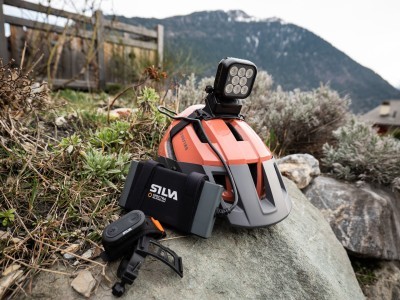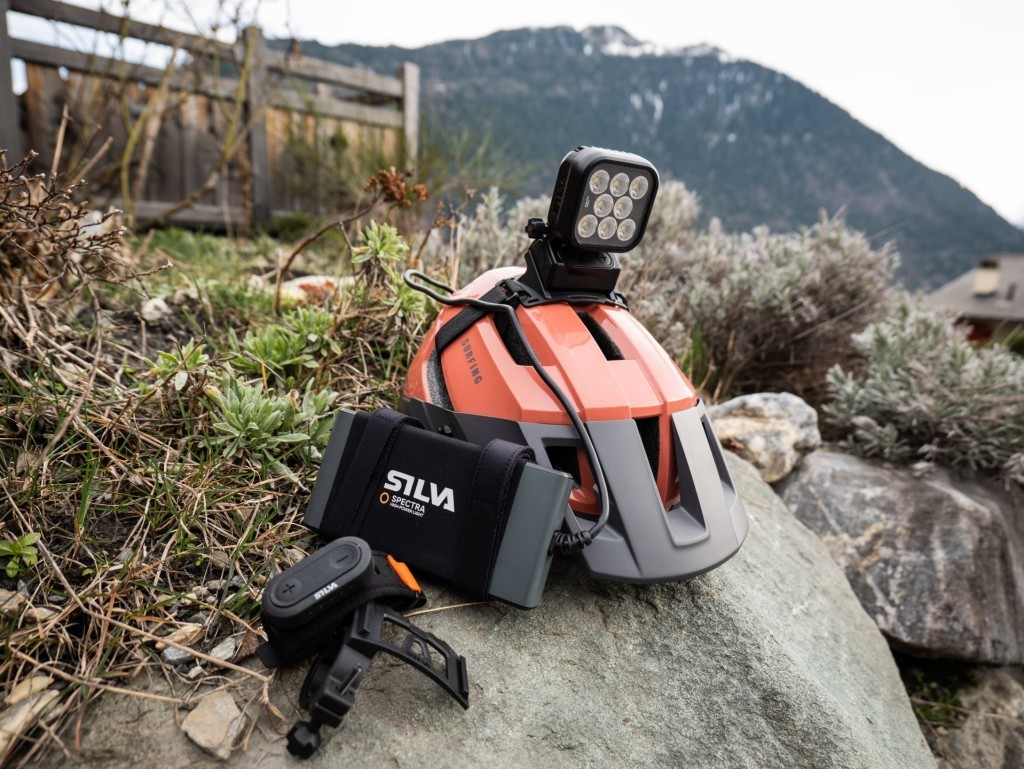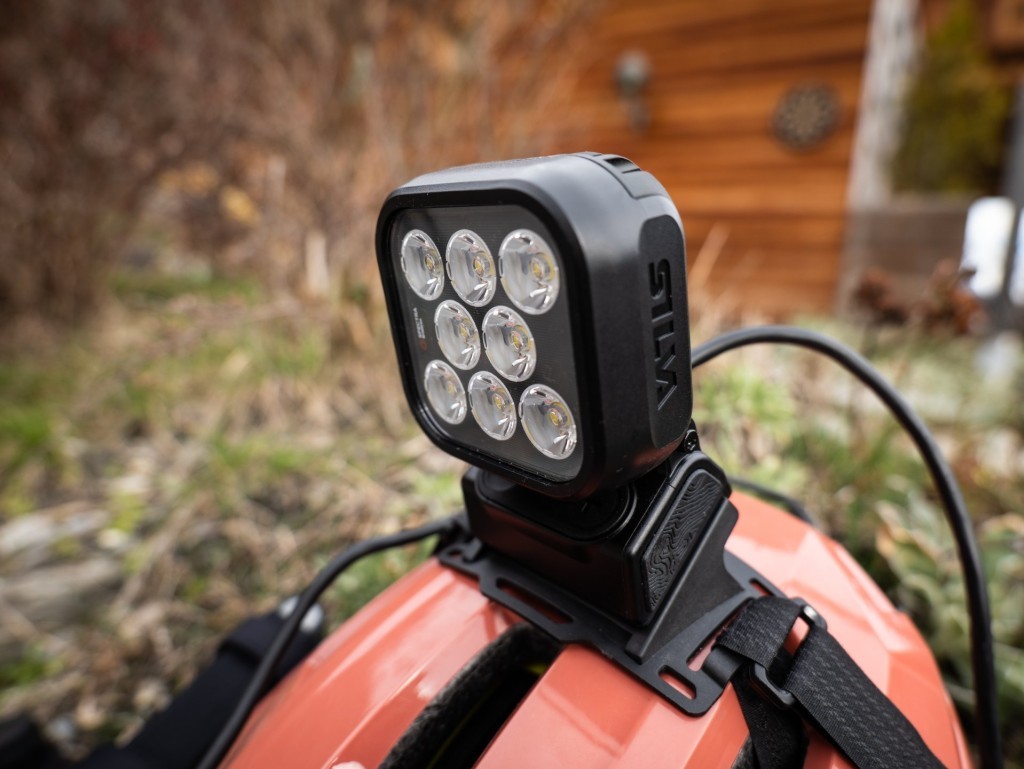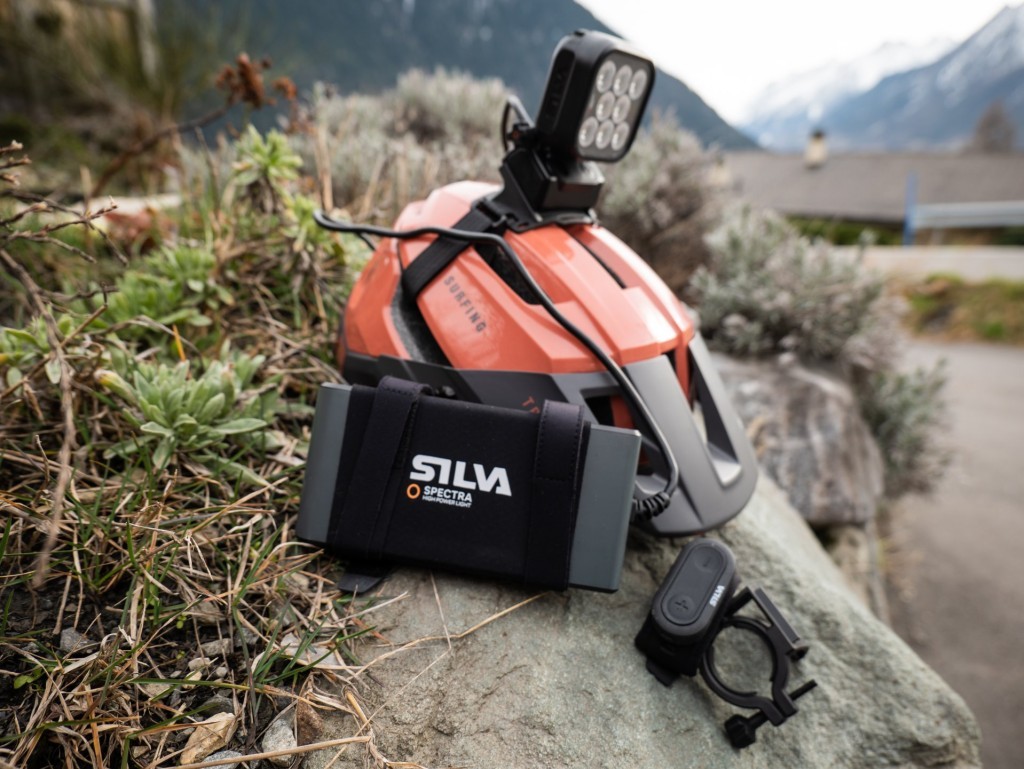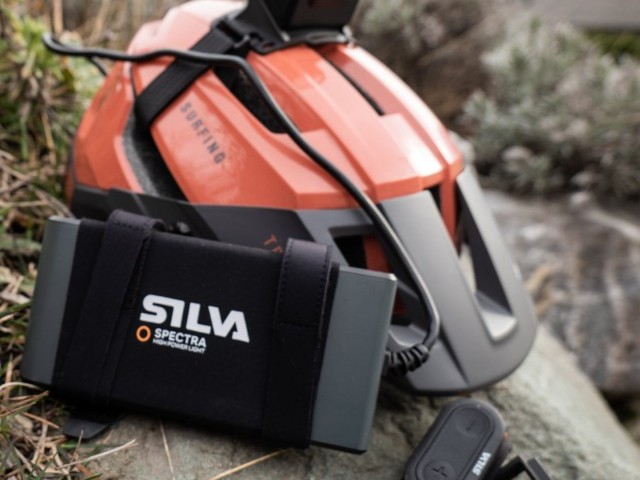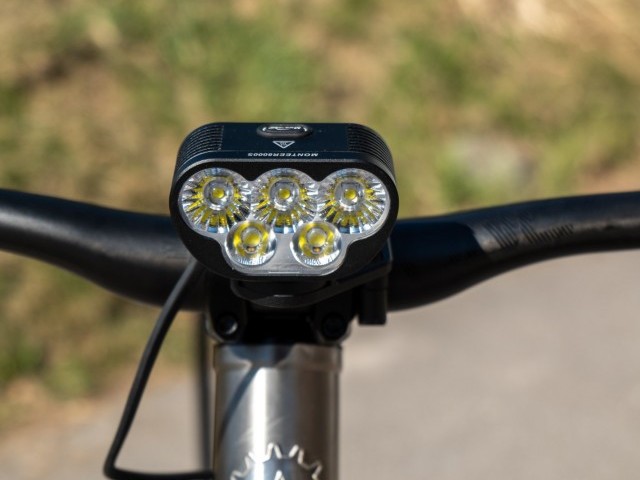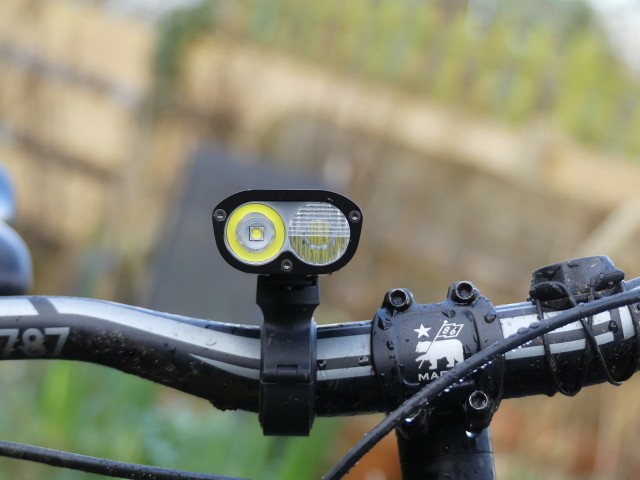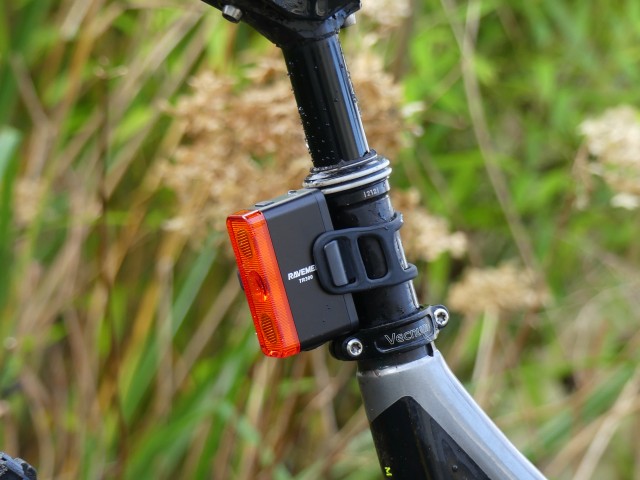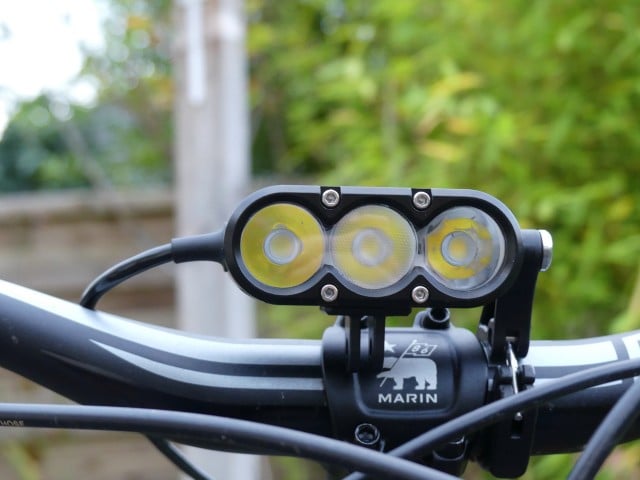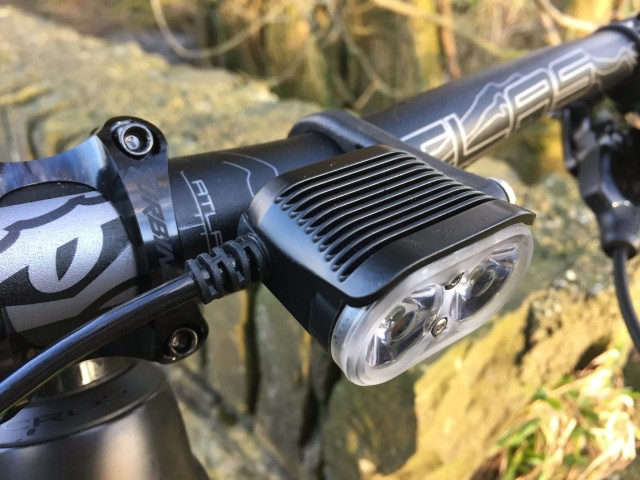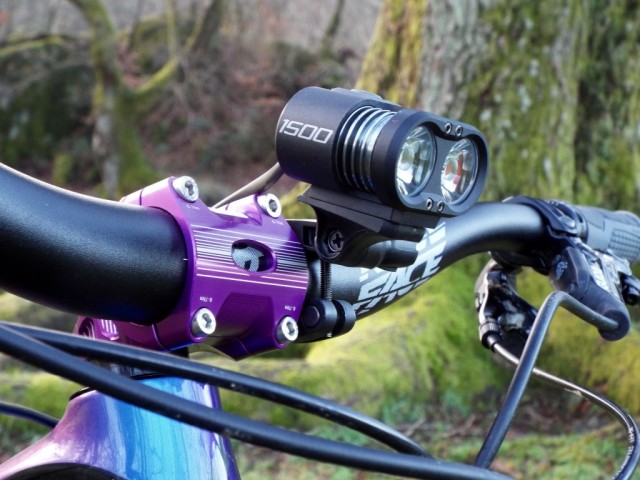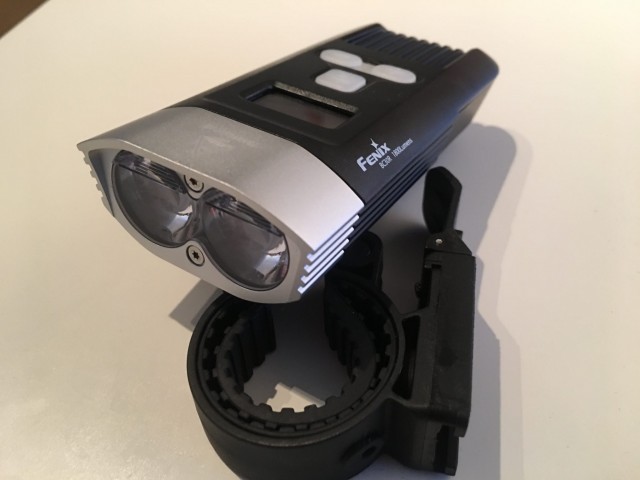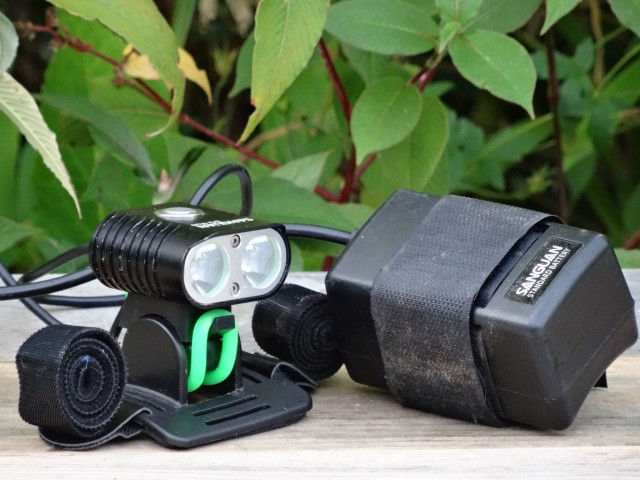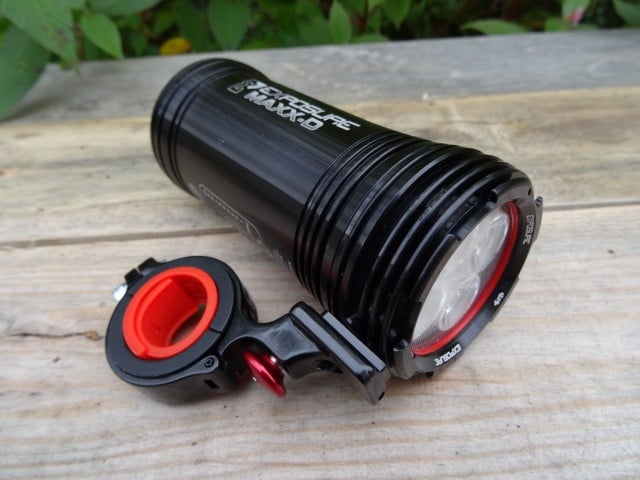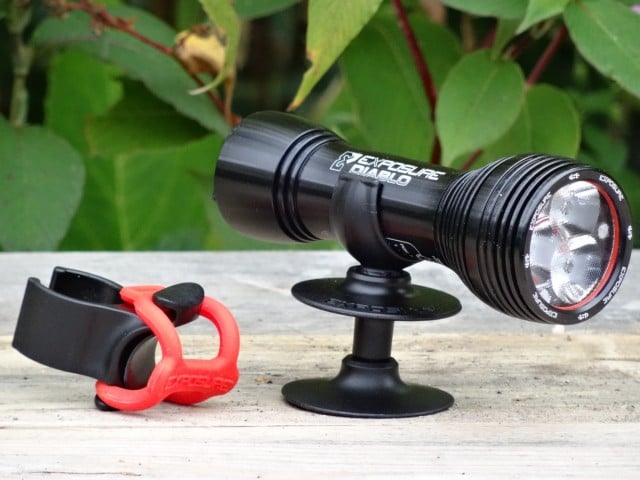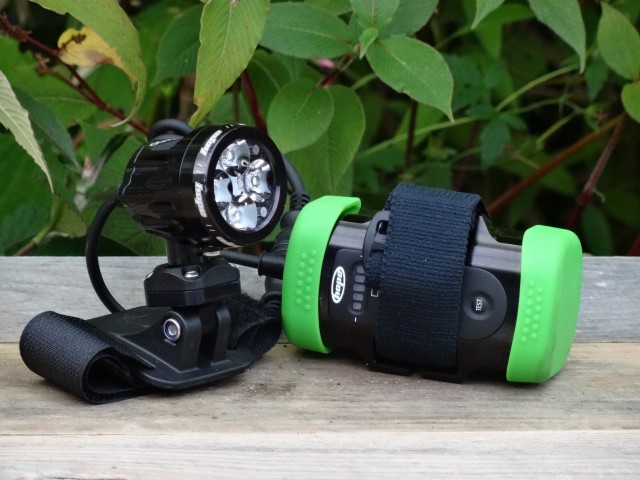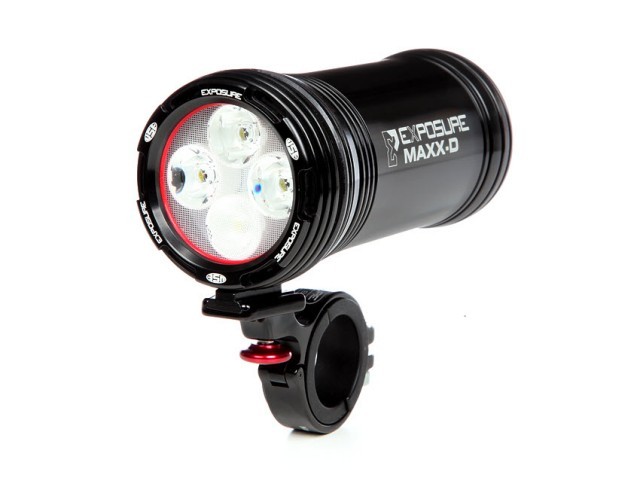At a glance
The Spectra A is an astounding headlamp that turns night into day, delivering an incredibly strong light output of 10 000 lumen. The headlamp holds 8 high power LED lights and is accompanied by a powerful 96 Wh battery. The lamp can be mounted either on the helmet or handlebars of the bike. Price: 799 EU / GBP 669
Buy Lights on
The product
The Silva Spectra A is as far as I know the most powerful light on the market. With a whooping 10.000 lumen, you really turn night into day. To power all this brightness, you receive a hefty 96 Wh battery that you can either stuff in the backpack or strap to your bike. For both options you can find the accessories in the box of the Spectra.
The rechargeable Li-Ion battery has a claimed burn time of 3 hours on maximum level, and up to 80 hours of burn time on minimum level. The battery indicator lets you know when you need to charge the battery. When the battery level is 10 %, the built-in low battery warning automatically adjusts the light to a 250-lumen reserve mode that lasts for 1 hour. They also sell a double battery connector that allows you to use two batteries for the case you need 6h of 10.000 lumens.
Turning the light on and off goes from either the buttons on the light itself, or with a remote control that links up using Bluetooth. Unfortunately they don’t have it in a shape that makes it easy to attach to the handlebars next to the dropper lever for example, but you do get a wristband for it.
Mounting the light can be done with their offset handlebar clamp or with the helmet mount using either straps or a glue on patch where the lights clip in. The battery itself can either be dumped in the backpack when using it as a helmet mounted light, or strapped to the frame of your bike using a neoprene sleeve with velcro straps.
Out on the trail
It took a while to set up the system. First the glue pad for the helmet seemed a not very secure way to keep the light in place. So we went for the helmet strap setup. Once mounted, we slid the light into place and noticed it does not really click in place. There is a small plastic notch that should stop the light from flying out, but I added a zip tie on there just to make sure. Next thing I noticed was that the weight of the light is pretty hefty. It puts 225 grams on the scale and you definitely notice this out on the trail.
The battery pack weighs in at 570 grams. Not a big deal when it’s in the backpack, but when you want to strap it onto the bike you struggle a bit to find a spot where it’s not in the way. We tested the setup as both a helmet and a bike mounted setup and found it works best as a bike mounted light.
Once on the trail, the light definitely turned night into day. The beam is mega bright but wide enough to give enough peripheral vision. High speed riding is sometimes an issue with nightriding but the Silva beam was perfect even if you hit 40-50 km/h. There are 5 settings to choose from, and for most of the riding setting 3 was bright enough.
Battery life was definitely enough too, although the neoprene sleeve that you need to hold the battery bank to your bike also covered the indicator lights. So you couldn’t see how much there still was left in the battery.
Verdict
The light part is great. It is bright and has a good beam for high speed action sports, the main issue with the Silva light is how it is mounted. A smaller battery and slightly less lumens wouldn’t hurt the riding experience, and make mounting the system a lot easier. It would also probably bring the price down a bit too. All is not lost however. For the moment we re-purposed the light as a mobile workshop light in the back of our campervan, eagerly awaiting for Silva to release a smaller battery pack that attaches better to the bike, and a more sturdy holder for the light.
Buy Lights on
This review was in Issue 74 of IMB.
For more information visit SilvaRelated
By Jarno Hoogland
Jarno's life has revolved around two wheels ever since he swung a leg over his first BMX at age 4. After a BMX and DH racing career, he moved on to work for bike shops, distributors and brands before ending up in the editors seat at IMB. Based in the ultimate testing ground in the Swiss mountains, he runs his guiding operation and makes sure every IMB issue is filled with top notch content.

